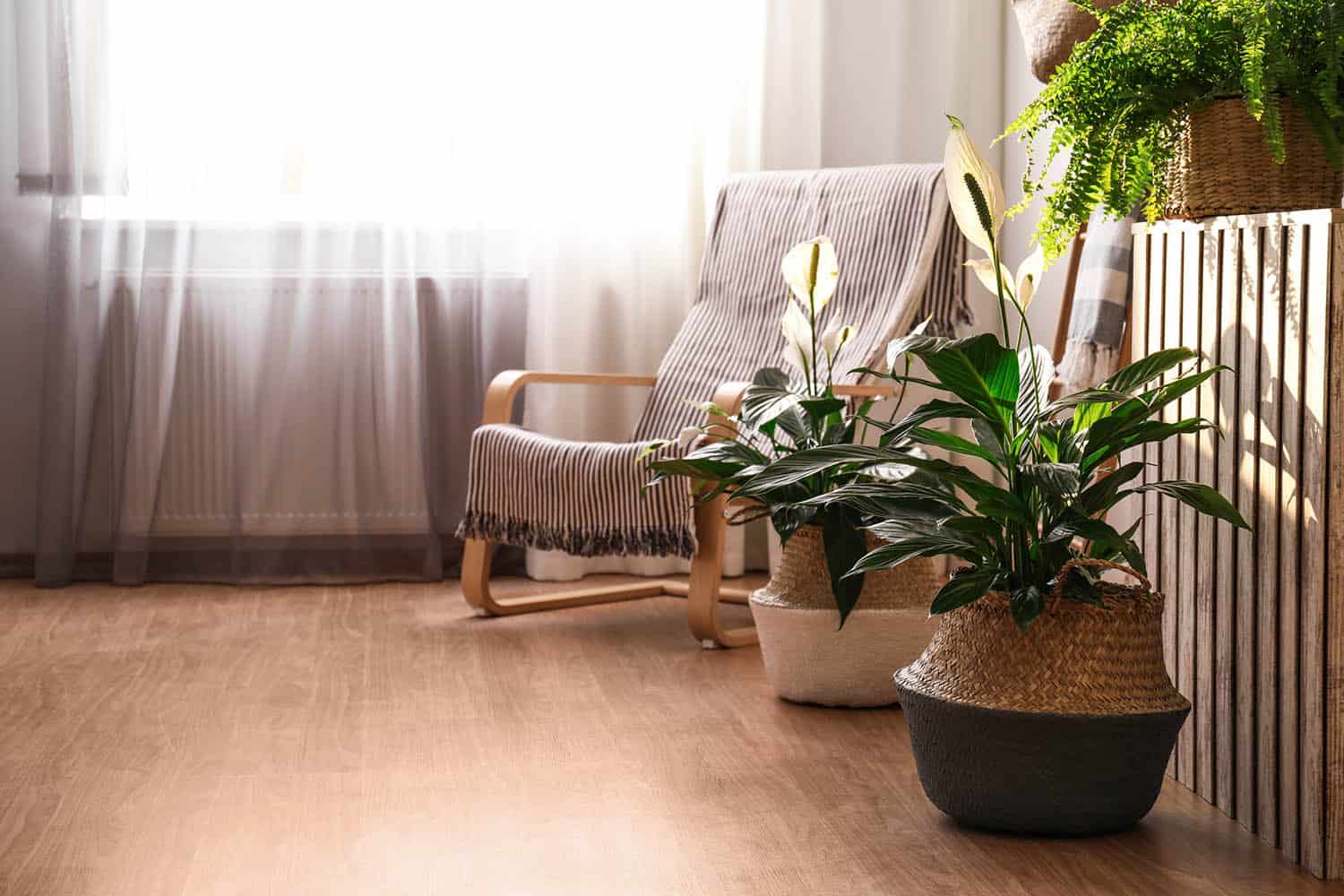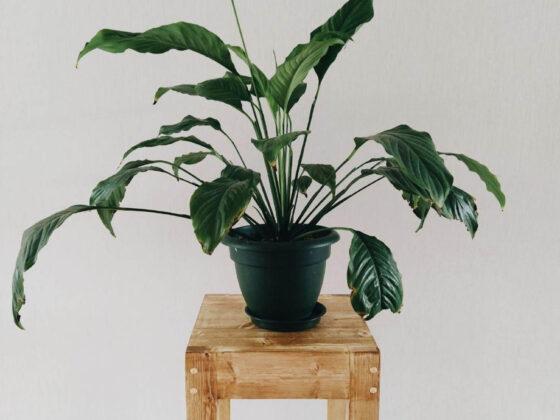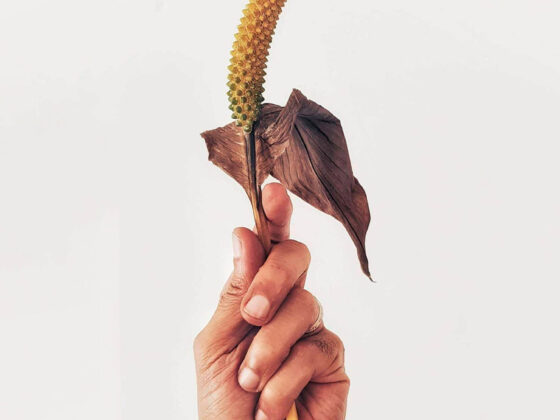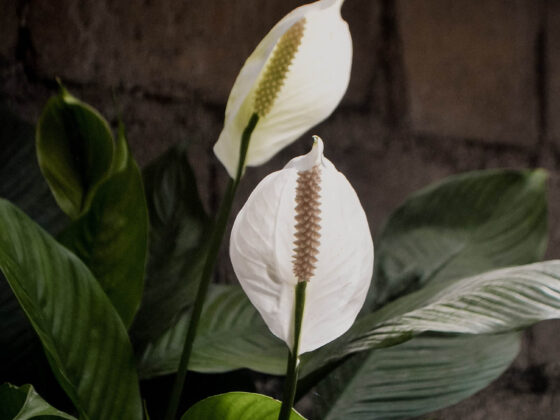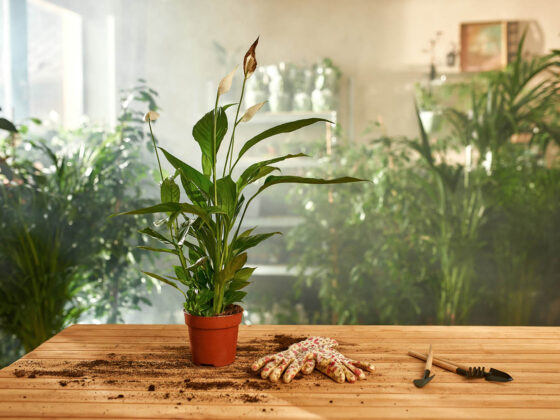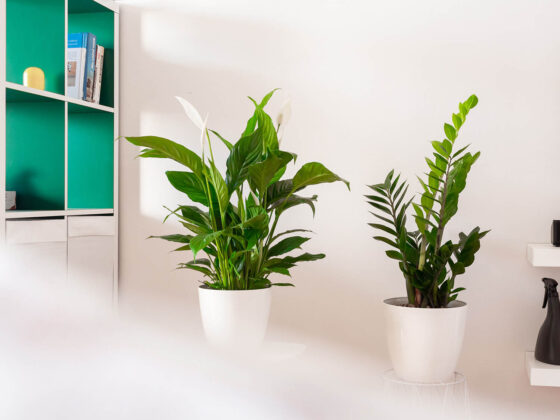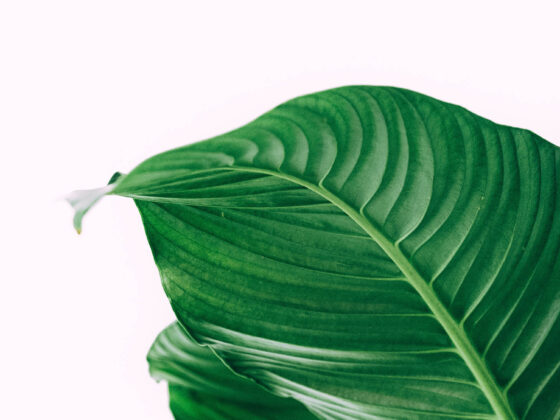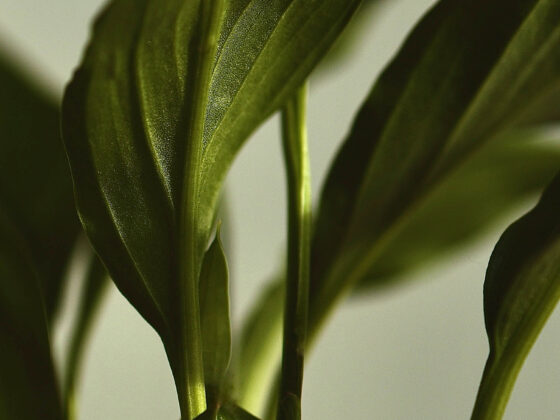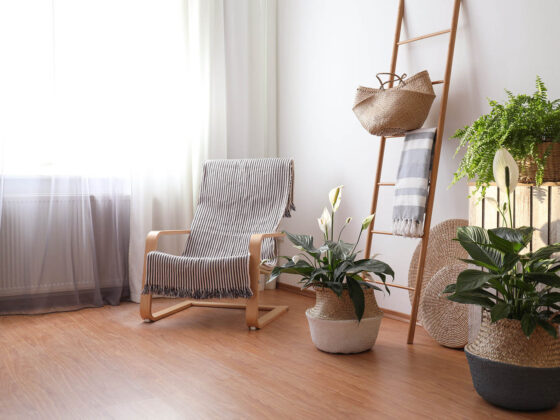Compost is great for Peace Lilies, though you may need to supplement with other fertilizers. Blend it into the potting mix at 10-20% of the total volume, or spread a 1-inch layer over the soil 1-3 times per year. Worm castings make excellent Peace Lily compost, enhancing the microscopic structure of the soil.
If you’re using homemade compost, make sure it’s “finished” before applying. Otherwise, you can damage your Peace Lily’s roots. Keep reading and we’ll give you some pointers on using compost to naturally fertilize your Spathiphyllum.
Compost vs. Fertilizer
If you read many gardening blogs, you’ll run into a lot of people claiming that compost isn’t a fertilizer. What’s the difference? And what do we mean when we say that compost can naturally fertilize your Peace Lily?
First things first: compost, like fertilizer, contains the nutrients that plants use to grow. However, not all of those chemicals can be used by your plants right away. Many of them are bound up in large molecules that have to be digested by fungi and bacteria first.
That makes it hard to put a nice, neat NPK number on the package. And that’s why you can’t sell compost as fertilizer in the United States. It does add nutrition to the soil, but it’s hard to quantify and standardize how much it’s contributing.
Can you use compost as the only source of nutrients for your Peace Lily? In most cases, you can! Spathiphyllum plants don’t require large inputs of nutrition. In the wild, they grow in the thick layer of decomposing plant matter that lines the rainforest floor. That stuff has a nutritional profile that’s not too different from compost.
In certain cases, compost might not be quite enough for your Peace Lily. If it’s getting tons of indirect sunlight and plenty of water, but still seems shrimpy and stunted, you might need to supplement it with synthetic fertilizer. Take a look at our article on fertilizing Peace Lilies for some tips on spotting an under-nourished Spathiphyllum.
Compost for Peace Lilies: the Pros and Cons
Okay, so you can use compost to fertilize your Peace Lily. But is it better than synthetic fertilizer? Not always – like most houseplant care options, it has both benefits and drawbacks.
Pros:
- Simplicity. Unlike liquid fertilizers that you need to mix into your plant’s water every few weeks, compost is a long-term investment. You only need to add it to the pot a couple of times per year at most.
- Low risk. Adding too much fertilizer all at once can scorch your Peace Lily’s roots. This hardly ever happens with compost, because the nutrients inside are released gradually, through the process of decomposition.
- Waste reduction. Compost requires much less energy to produce than synthetic fertilizer. If you’re making it from your own food and lawn waste, it has virtually no carbon footprint! Plus, you’re putting your trash to good use instead of dumping it in a landfill.
- Improved soil structure. The microorganisms in compost cause the soil to clump up into tiny aggregates. This leaves behind pores where air and water can flow, creating a better environment for your Peace Lily’s roots.
- Disease resistance. Compost often contains helpful bacteria and other microbes. They can crowd out pathogenic species that might cause root disease.
Cons:
- Weak nutrition. As great as compost is, it can’t compete with industrially-made fertilizer in terms of sheer nutrient content. If you want to be certain your Peace Lily is getting every bit of nutrition it can use, go with synthetics.
- Slow action. We mentioned above that compost gives up its nutrients slowly. If your plant is hurting due to a nutrient shortage, artificial fertilizers offer a quicker fix.
- Lack of precision. Liquid fertilizer lets you dilute down to a very specific concentration. This allows for experimentation to figure out the dosage that produces the best growth and flowering. Compost doesn’t give you that kind of control.
The Best Compost for a Peace Lily
You can choose between a few different types of compost for your Spathiphyllum.
First, there’s the standard kind you’d get from piling up dead plants in your backyard. If the label just says “compost”, this is what you’re buying. It’s crumbly, rich in nutrients, and perfect for indoor and outdoor soils.
Next, you have worm castings, also known as vermicompost, also known as worm poop! It’s what’s left behind when earthworms digest a bunch of food and/or farm waste. It looks and feels a lot like traditional compost, though worm castings may retain more nitrogen and phosphorus. Worm castings are nice and fluffy, making them good for soil aeration.
Finally, there’s composted manure from cows or other farm animals. It’s an excellent soil amendment for farmers and gardeners, but it’s usually too smelly for use in the home.
Which compost is best for your Peace Lily? We recommend vermicompost, which seems to be slightly better for soil drainage, but standard compost is also great.
You can buy pre-made compost, but if you want to be a real eco-champ, you can also make it at home. Worm composting offers an easy way to get started with small volumes of kitchen scraps. You can set up a worm bin in your kitchen and get a little colony of red wigglers going. It’s easier than building and maintaining a big compost pile in your backyard.
For instructions on both worm bins and traditional composting, check out this in-depth guide at our sister site.
How to Use Compost With Your Peace Lily
One way to supplement your Peace Lily’s diet is to blend some compost into the soil when you repot. A Spathiphyllum usually needs to switch to a larger pot every 2-5 years. Take that opportunity to refresh their potting mix.
Compost should form no more than 20% of the total soil volume. More than that tends to make the mix hold too much water, which can cause root rot. If your potting mix has a high percentage of spongy stuff like peat moss or fine particles like vermiculite, reduce the compost fraction to 5-10%.
You can still fertilize with compost even if you’re not looking to transplant your Peace Lily. Just spread an inch-thick layer of it over the soil. Do this in the early spring, and the nutrients will trickle down to the roots as you water. If your plant is getting a lot of light and growing fast, you can another compost dressing every 2-3 months.
When making your own compost, be sure that it’s finished before applying it to your Peace Lily. It should be a uniform substance that looks dark brown or black, crumbles easily in your fingers, and has a nice, earthy smell. If there are still any visible chunks of food inside, it’s not ready.
Other Natural Fertilizers
Many houseplant owners like to supplement their soils with other organic materials that “compost” right in the pot. Let’s look at a few of these and see whether they’re good for your Spathiphyllum.
Are Coffee Grounds Good For a Peace Lily?
Tons of plant bloggers love adding spent coffee grounds to their houseplants. We’re a little more cautious. Despite some claims, there’s little evidence that coffee can improve soil pH. And caffeine can suppress the growth of some plants and seedlings.
Use coffee grounds sparingly with your Peace Lily. Sprinkle a little at a time on top of the soil. Too much can lock moisture in, creating a higher risk of root rot.
Is Fish Emulsion Good For a Peace Lily?
Fish emulsion is a super-popular natural fertilizer made from ground-up byproducts of the fishing industry. That makes it mostly organic, though the process is much more industrial than dumping your leftovers in a compost bin.
Fish emulsion makes a decent natural fertilizer for Peace Lilies. And since it’s a liquid, you don’t have to worry that it will clog the soil. However, it’s on the expensive side, and most varieties have a strong fishy odor.
Is Vinegar Good For a Peace Lily?
We’ve seen some sources recommending diluted vinegar as a natural Peace Lily fertilizer. This is…confusing. Vinegar has basically no nutritional value at all. Our best guess is that this started as a recommendation for soil acidification. A few rounds of internet telephone later, we have a claim about fertilizer.
And before you ask, no, vinegar won’t acidify the soil either.
Are Eggshells Good For a Peace Lily?
Many people advise adding eggshells to your houseplants as a source of calcium. This isn’t likely to help your Peace Lily much. Eggshells take a long time to decompose and release their nutrients – think decades, not months.
You can speed this up a bit by grinding them down into a fine powder. Still, if your Spathiphyllum has a bad calcium shortage, you should use a faster-acting fertilizer. And if not, you’re better off with a more balanced nutrient source like compost.
One useful thing you can do with eggshells is put them in your worm bin. Eggshell bits help to break down other chunks of food in an earthworm’s gut.
Your Peace Lily will love a bit of compost as long as you don’t use too much at once. Plus, getting better at recycling food waste is an important step toward a more sustainable way of life. Go ahead and try out a natural fertilizer with your Peace Lily. We think you’ll like the results.






